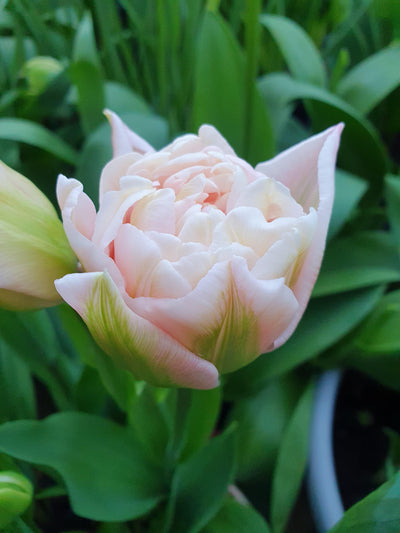What is direct sowing all about?
The sun is shining and the trees are green, midsummer is fast approaching and gardeners are as busy as ever. Watering, planting out, deadheading, tidying, the list is endless of jobs to do at this time of year. Seeds planted in March or April will be sturdy and substantial, ready to go out into their final positions once the risk of frost has passed. Many may think that we have well and truly missed the boat for seed sowing this season, but they could not be more wrong! Direct sowing seeds in the garden is a process of sowing seeds directly into the soil in their final positions, as opposed to starting them indoors earlier in the season and transplanting them later on. This allows plants to grow in their natural environment, reducing root disturbance and giving the planting scheme a more naturalistic feel. And now is the perfect time to get started…
But how to know when the time is right, and what’s the best method for success when direct sowing? There is one key gardening tip which might sound marginally radical but is a sure-fire way to success: sun’s out, bums out! When the soil would be warm enough to sit on with your bare bottom, it is warm enough to direct sow. How many gardeners have taken this literally over the years is a mystery… But the concept is useful – when the planting spot is warm to the touch (usually from the end of May onwards) it will be a warm enough growing medium for your new seedlings.
Firstly, prepare the soil by clearing it: removing any weeds, leaves or other debris and then turning or raking it down to a fine tilth. This will mimic the conditions in a seed tray or other pot, and seed compost can even be added to the surface of the soil to give extra nutrients/ protection. Ensure the spot you have selected includes the desired growing conditions of the plant (check whether it is in full sun, partial shade or full shade) and make certain of the final size of the plants, as you don’t want them to swamp or be swamped by those surrounding them.
Perhaps the most efficient method is to first water the soil before sowing the seeds. If it is done after, there is a risk that small seeds (particularly dust-like ones such as foxgloves, antirrhinum (snapdragons) or nicotiana) may become dislodged and can even be washed away. Therefore, by watering the soil beforehand, you not only save from doing it post-sowing but also allow the seeds to stick to their final positions. If the weather is warm and dry, the seedling may need to be watered in their first few weeks post-germination, to ensure they retain the nutrients needed for strong and resilient adult plant.
Using a rake or trowel, create small furrows in the soil in which to scatter your seeds. Check the planting depth on the packet, which is usually between 0.5 and 3 cm, and the most precise of gardeners may even use a ruler to measure the depth of the small trench created. However, ensure that you check the sowing instructions, as some seeds suit being scattered on the soil’s surface and not buried as they need light to germinate, with poppies being some of the most famous examples.
Scattering the seed thinly will ensure the plants have adequate growing room, but if sown too thickly any overcrowding can be thinned; removing weak seedlings or transplanting further away will improve the health and ventilation of all plants.
The best seeds to direct sow are annual flowers, as these grow rapidly and will shoot up from the soil to give their performance in mid to late summer. Some popular examples include cosmos, sunflowers, marigolds, zinnias, nasturtiums, alyssums and cleomes but the list goes on. Most seed packets will detail whether or not the variety can be direct sown, and if so how.
Direct sowing is an extremely satisfying and rewarding process, taking minimal time and effort for cheap, beautiful, and long lasting displays. Within weeks shoots of green will be bursting from the soil, and if seedheads on the post-flowered annuals are left to mature, then the patch may propagate itself in years to come, filling your borders with easy and exciting self-seeders.
Written for TRPG by Becky Buxton





Leave a comment